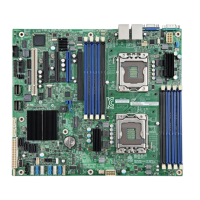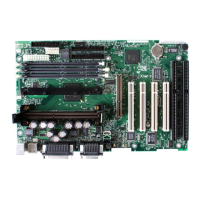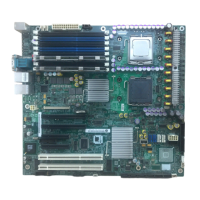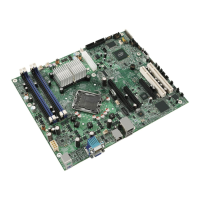System Event Log Troubleshooting Guide for EPSD
Platforms Based on Intel
®
Xeon
®
Processor E5 4600/2600/2400/1600/1400 Product Families
Cooling Subsystem
Revision 1.1 Intel order number G90620-002 55
5.2.4 Processor DTS Thermal Margin Sensors
Intel
®
Xeon
®
processor E5-4600/2600/2400/1600 v2 product families are incorporating a DTS-based thermal spec. This allows a
much more accurate control of the thermal solution and enables lower fan speeds and lower fan power consumption. For Intel
®
Xeon
®
processor E5-4600/2600/2400/1600 product families, this requires significant BMC FW calculations to derive the sensor value.
Intel
®
Xeon
®
processor E5-4600/2600/2400/1600 v2 product families are the follow-on processors to Intel
®
Xeon
®
processor E5-
4600/2600/2400/1600 product families. For Intel
®
Xeon
®
processor E5-4600/2600/2400/1600 v2 product families, the BMC’s
derivation of this value is greatly simplified because the majority of the calculations are performed within the processor itself.
The main usage of this sensor is as an input to the BMC’s fan control algorithms. The BMC implements this as a threshold sensor.
There is one DTS sensor for each installed physical processor package. Thresholds are not set and alert generation is not enabled
for these sensors.
Table 43: Processor DTS Thermal Margin Sensors Typical Characteristics
83h = Processor 1 DTS Thermal Margin
84h = Processor 2 DTS Thermal Margin
85h = Processor 3 DTS Thermal Margin
86h = Processor 4 DTS Thermal Margin
Event Direction and
Event Type
[7] Event direction
0b = Assertion Event
1b = Deassertion Event
[6:0] Event Type = 01h (Threshold)
5.2.5 Discrete Thermal Sensors
Discrete thermal sensors do not report a temperature at all, instead they report an overheating event of some kind. For example,
VRD Hot (voltage regulator is overheating) or processor Thermal Trip (the processor got so hot that its over-temperature protection
was triggered and the system was shut down to prevent damage).

